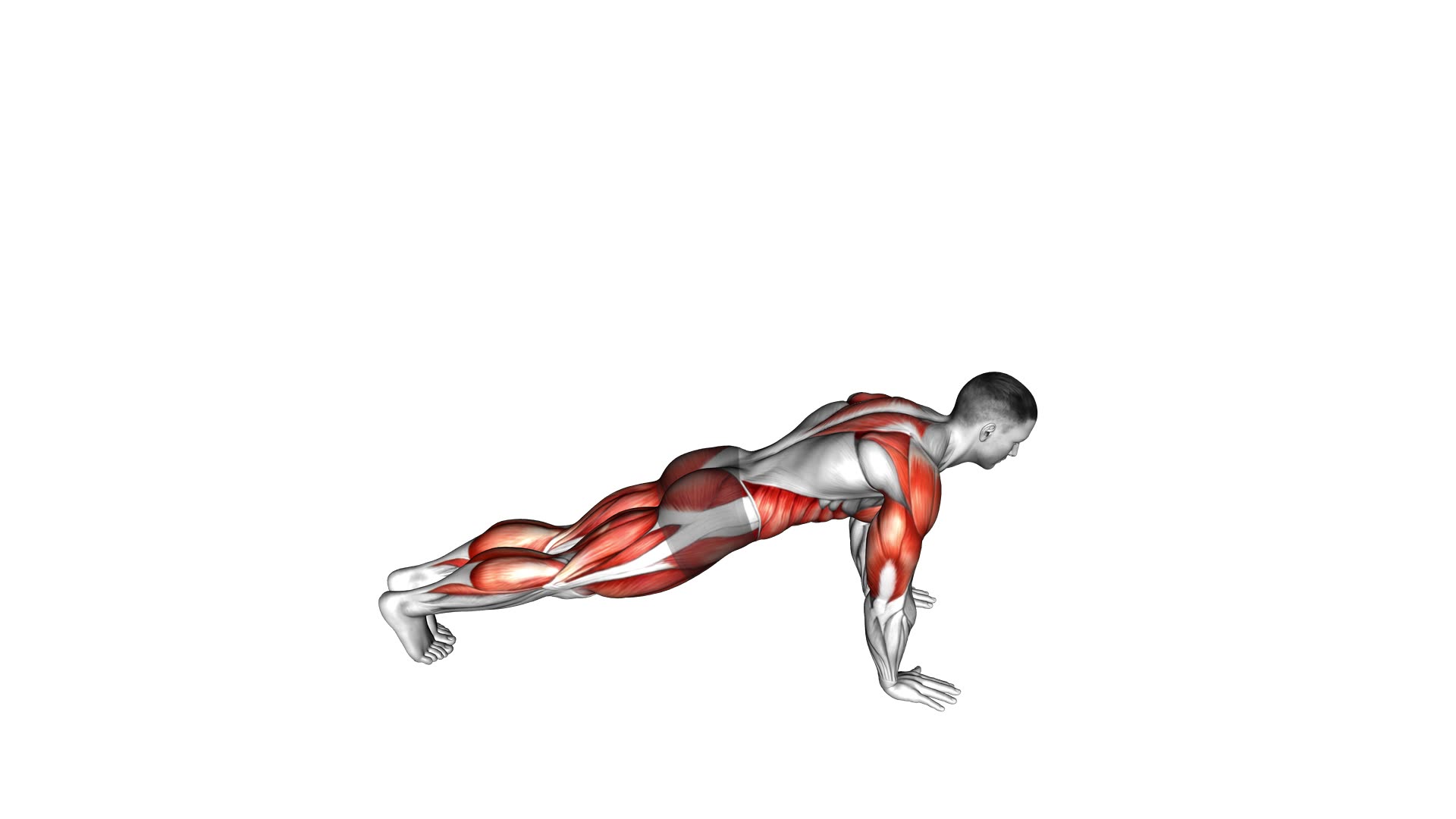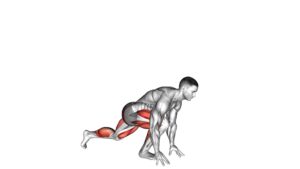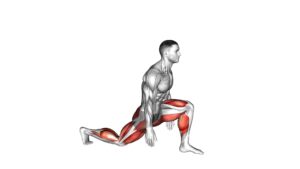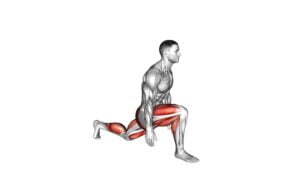Low Lunge Twist – Video Exercise Guide & Tips

Are you looking to add a new exercise to your routine that targets your lower body and core? Look no further than the low lunge twist!
Watch This Exercise Video
This dynamic movement not only improves flexibility and balance but also strengthens your legs, glutes, and abs.
In this article, we will guide you through the proper form, offer modifications for all fitness levels, and provide tips to maximize the effectiveness of this exercise.
Get ready to level up your fitness game with the low lunge twist!
Key Takeaways
- Low Lunge Twist improves flexibility and balance
- It strengthens legs, glutes, and abs
- The exercise provides a deeper stretch for hip flexors and quadriceps
- Engaging the core and obliques adds an additional challenge
Benefits of the Low Lunge Twist
One benefit of the Low Lunge Twist is its ability to stretch and strengthen your muscles. This exercise offers variations that target different areas of your body, allowing you to customize your workout based on your needs. One variation involves placing your back knee on the ground while twisting, which provides a deeper stretch for your hip flexors and quadriceps. Another variation includes adding a side reach with your arms, engaging your core and obliques for an additional challenge.
The Low Lunge Twist is particularly beneficial for improving flexibility. As you twist your torso, you stretch the muscles in your back, shoulders, and chest. This can help alleviate tension and improve range of motion in these areas. Additionally, the stretch in your hip flexors and quadriceps can enhance your overall flexibility and improve your posture.
By incorporating the Low Lunge Twist into your exercise routine, you can experience the benefits of increased muscle strength and flexibility. This exercise not only targets specific muscle groups but also promotes overall body awareness and stability.
Now that you understand the benefits, let's dive into the proper form for the Low Lunge Twist.
Proper Form for the Low Lunge Twist
To properly perform the Low Lunge Twist, you need to start in a lunge position with your front knee bent and your back leg extended behind you. Begin by stepping your right foot forward into a lunge, ensuring that your knee is directly above your ankle. Your left leg should be extended behind you, with the toes resting on the ground. Place your hands on your hips and engage your core muscles.
To initiate the twist, inhale deeply and lift your chest upwards, lengthening your spine. As you exhale, rotate your torso towards the right, placing your left hand on the ground or on a block for support. Extend your right arm upwards, reaching towards the sky. Keep your gaze directed towards your right hand.
To deepen the stretch and engage your lower body further, you can experiment with different variations of the Low Lunge Twist. For example, you can bring your back knee down to the ground, allowing for a more stable base. Alternatively, you can lift your back leg off the ground and bring your knee towards your chest, intensifying the stretch.
Remember to focus on your breathing throughout the exercise. Take deep inhales and exhales, allowing your breath to guide you deeper into the twist. This will help to release tension and increase flexibility in your spine and hips.
Modifications for Different Fitness Levels
As you progress through your fitness journey, it's important to know that modifications are available for the Low Lunge Twist to accommodate different fitness levels.
Whether you're a beginner looking to ease into the exercise or an advanced practitioner seeking a greater challenge, here are some modifications you can incorporate:
- Beginner Modifications: If you're new to the Low Lunge Twist, it's important to focus on building a strong foundation and proper form. Start by keeping your back knee on the ground and using a block or bolster under your hand for support. This will help you maintain stability and prevent strain on your muscles.
- Advanced Modifications: For those who are more experienced and looking to intensify the Low Lunge Twist, you can try lifting your back knee off the ground and straightening your back leg. This will engage your core and increase the stretch in your hip flexors and quadriceps.
- Deepening the Twist: To deepen the twist, you can bring your opposite elbow to the outside of your front thigh, using it as leverage to twist further. Remember to keep your chest open and your shoulders relaxed throughout the movement.
- Adding Resistance: If you want to challenge yourself even further, you can hold a dumbbell or kettlebell in your hands as you twist. This will add resistance and help you build strength in your upper body.
Common Mistakes to Avoid During the Low Lunge Twist
Avoid these common mistakes during the Low Lunge Twist to ensure proper form and maximize the benefits of the exercise. One of the most common mistakes is failing to engage the core muscles. Remember to activate your abdominal muscles throughout the entire exercise to maintain stability and prevent strain on the lower back.
Another mistake to watch out for is collapsing the chest and rounding the shoulders. Instead, keep your chest lifted and open, with your shoulders relaxed away from your ears.
Another common mistake is over-twisting the spine. While it's important to rotate the torso, be mindful not to twist too far or force the movement. Listen to your body and only go as far as feels comfortable.
It's also important to keep the front knee aligned with the ankle and not let it collapse inward. This helps protect the knee joint and ensures proper alignment.
For beginners, it's recommended to modify the low lunge twist by keeping the back knee on the ground. This provides more stability and allows you to focus on the twisting motion without overwhelming the body. As you gain strength and flexibility, you can gradually progress to lifting the back knee off the ground.
Tips for Maximizing the Effectiveness of the Exercise
To maximize the effectiveness of the low lunge twist, it's important to focus on proper form. Ensure that your front knee is directly above your ankle and that your back leg is extended straight. Engage your core and maintain a straight spine throughout the exercise.
Additionally, incorporating proper breathing techniques, such as inhaling deeply as you twist and exhaling as you release, can help improve balance and stability.
Proper Form Importance
To maximize the effectiveness of the low lunge twist exercise, ensure that you maintain proper form throughout the movement. Here are some tips to help you achieve proper form and maximize the benefits of this exercise:
- Importance of alignment: It's crucial to align your front knee directly over your ankle and keep your back leg extended behind you. This alignment helps to engage the muscles properly and prevents strain on the joints.
- Engage your core: Throughout the exercise, remember to engage your core muscles by drawing your belly button towards your spine. This not only helps to stabilize your body but also intensifies the twist and strengthens your abdominal muscles.
- Keep your chest lifted: It's important to maintain an upright posture and keep your chest lifted throughout the exercise. This helps to open up the chest and shoulders, improving flexibility and allowing for a deeper twist.
- Variations for advanced practitioners: Once you have mastered the basic low lunge twist, you can challenge yourself by adding variations. This can include using a resistance band or adding a dumbbell to increase resistance and further enhance strength and stability.
Breathing Techniques for Balance
Maintaining proper breathing techniques is crucial for maximizing the effectiveness of the low lunge twist exercise and achieving balance. Deep, controlled breaths help to oxygenate your muscles, increase your focus, and promote relaxation. Incorporating specific breathing exercises into your balance training routine can further enhance your performance.
One effective technique is to inhale deeply through your nose as you lengthen your spine and prepare for the twist. Exhale slowly through your mouth as you rotate your torso and deepen the twist. This controlled breathing pattern helps stabilize your core and maintain your balance throughout the movement. By syncing your breath with the low lunge twist, you can optimize the exercise's benefits and improve your overall stability and coordination.
Transitioning into modifications for beginners, let's explore how to adapt this exercise for those just starting out.
Modifications for Beginners
To maximize the effectiveness of the low lunge twist exercise and ensure optimal results, beginners can employ modifications that cater to their fitness level and help them gradually build strength and flexibility. Here are some variations for beginners to consider:
- Use blocks: If you find it challenging to reach the ground with your hand while twisted, place yoga blocks on either side of your front foot. This will provide support and allow you to focus on the twist without straining.
- Take a wider stance: Start with a wider lunge stance to provide more stability and balance. This modification will help you feel more grounded and comfortable as you work on the twist.
- Use a chair: If getting into a low lunge is too difficult, you can use a chair for support. Place your back foot on the seat of the chair and lunge forward with your front foot. This modification will help you maintain stability and gradually build strength.
- Focus on the upper body: If the lunge position is challenging, you can focus solely on the upper body twist. Stand with your feet hip-width apart and twist your torso from side to side. This modification is a great way to work on spinal mobility and build core strength.
Sample Low Lunge Twist Workout Routine
Follow this sample Low Lunge Twist workout routine to strengthen your core and improve flexibility.
Start by performing the basic Low Lunge Twist exercise, ensuring that your front knee is directly above your ankle and your back leg is extended behind you. Place your hands on your hips and twist your torso towards the front leg, reaching your opposite arm towards the ceiling. Hold this position for 30 seconds on each side, focusing on maintaining proper form and engaging your core muscles.
To add variation to your workout, you can try different low lunge twist variations. For example, you can add a knee lift by bringing your back knee towards your chest as you twist. This will further engage your core and challenge your balance. Another variation is to extend your front leg straight out in front of you, creating a deeper stretch in your hamstrings and hip flexors.
To increase the intensity of your low lunge twist workout, you can add weights. Hold a dumbbell or kettlebell in your hands as you perform the exercise. This won't only strengthen your core, but also work your upper body muscles.
Remember to listen to your body and start with lighter weights before gradually increasing the load.
Incorporate this sample low lunge twist workout routine into your fitness routine to improve your core strength, flexibility, and overall fitness level.
Frequently Asked Questions
How Long Should I Hold the Low Lunge Twist Pose?
When doing the low lunge twist pose, it's important to know how long to hold it for maximum benefits.
The holding duration for this pose can vary depending on your level of comfort and flexibility. Generally, it's recommended to hold the low lunge twist for about 30 seconds to 1 minute on each side.
However, if you're a beginner or have any modifications, it's best to start with shorter durations and gradually increase as you progress.
Can the Low Lunge Twist Help With Back Pain?
The low lunge twist can definitely help with back pain. This exercise stretches and strengthens the muscles in your back, improving posture and relieving tension. By incorporating modifications, you can tailor the pose to your needs and level of flexibility.
The twisting motion also helps to release any built-up stress or tightness in the spine. So, if you're looking to alleviate back pain and improve your posture, the low lunge twist is a great option to incorporate into your routine.
Is It Necessary to Warm up Before Performing the Low Lunge Twist?
Before performing the low lunge twist, it's important to warm up your body. Warming up has several benefits, such as increasing blood flow to your muscles and reducing the risk of injury.
If you're unable to do the low lunge twist, there are alternative exercises that can help you stretch and strengthen your muscles.
Can the Low Lunge Twist Improve Flexibility?
The low lunge twist is a great exercise for improving flexibility. By stretching the hip flexors and opening up the chest, this pose can help increase your range of motion. It also helps to improve balance and stability.
There are different variations of the low lunge twist that you can try to target different muscle groups and increase the challenge.
Incorporating this exercise into your routine can lead to greater flexibility and overall body strength.
Are There Any Precautions or Contraindications for the Low Lunge Twist?
Before attempting the low lunge twist, it's important to be aware of any precautions or contraindications. This exercise involves a deep lunge and spinal twist, so individuals with knee or hip issues should proceed with caution.
If you have any pre-existing injuries or conditions, it's best to consult with a healthcare professional before attempting this exercise. Additionally, pregnant individuals or those with balance issues may need modifications or alternative exercises to ensure safety and effectiveness.
Conclusion
In conclusion, the low lunge twist is a highly effective exercise that offers numerous benefits for the body. By engaging the core, stretching the muscles, and improving flexibility, this exercise helps to enhance overall strength and stability.
Proper form and modifications for different fitness levels are crucial to ensure safety and maximize results. Avoiding common mistakes and following helpful tips can further increase the effectiveness of this exercise.
Incorporating the low lunge twist into a regular workout routine can lead to improved fitness and overall well-being.

Author
Years ago, the spark of my life’s passion ignited in my mind the moment I stepped into the local gym for the first time. The inaugural bead of perspiration, the initial endeavor, the very first surge of endorphins, and a sense of pride that washed over me post-workout marked the beginning of my deep-seated interest in strength sports, fitness, and sports nutrition. This very curiosity blossomed rapidly into a profound fascination, propelling me to earn a Master’s degree in Physical Education from the Academy of Physical Education in Krakow, followed by a Sports Manager diploma from the Jagiellonian University. My journey of growth led me to gain more specialized qualifications, such as being a certified personal trainer with a focus on sports dietetics, a lifeguard, and an instructor for wellness and corrective gymnastics. Theoretical knowledge paired seamlessly with practical experience, reinforcing my belief that the transformation of individuals under my guidance was also a reflection of my personal growth. This belief holds true even today. Each day, I strive to push the boundaries and explore new realms. These realms gently elevate me to greater heights. The unique combination of passion for my field and the continuous quest for growth fuels my drive to break new ground.







